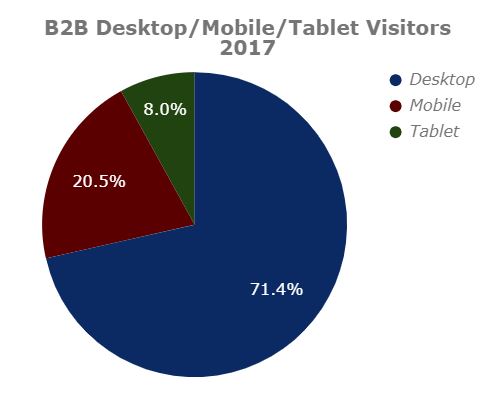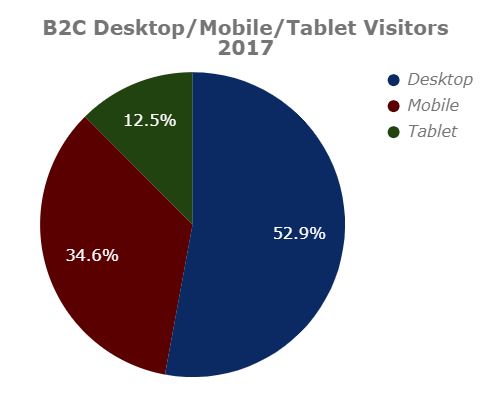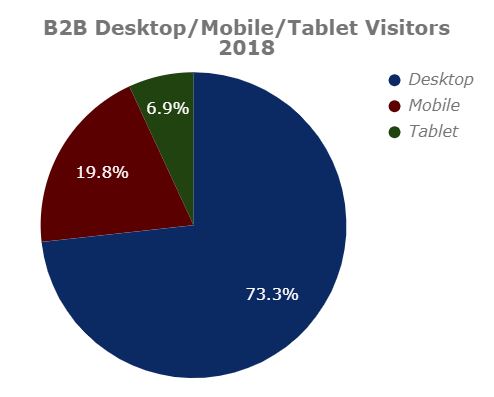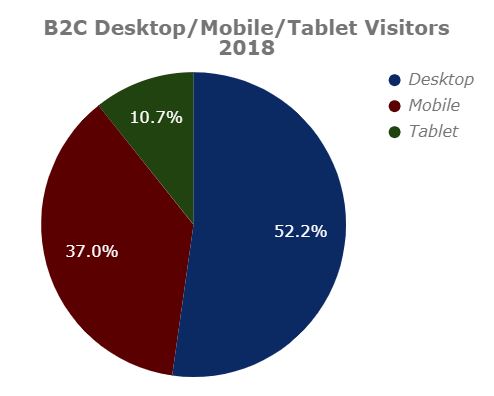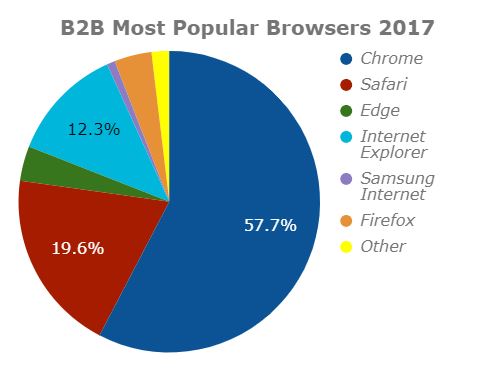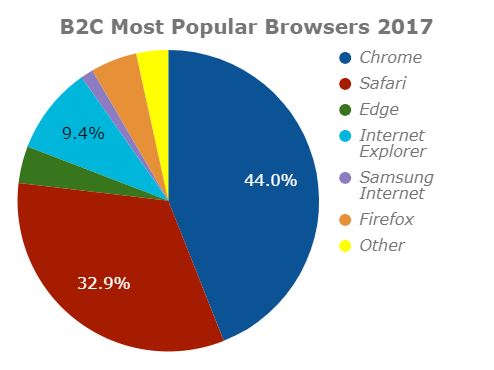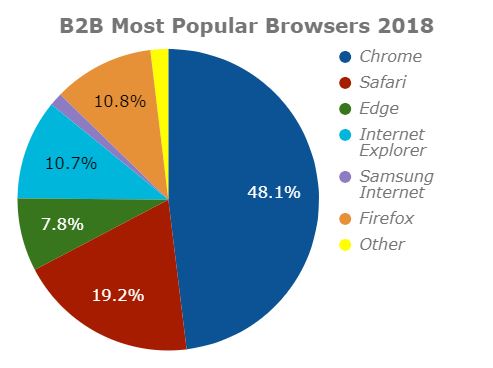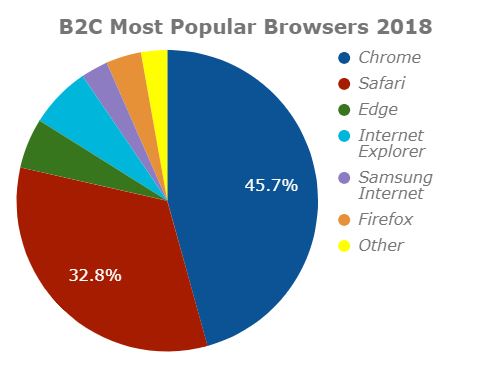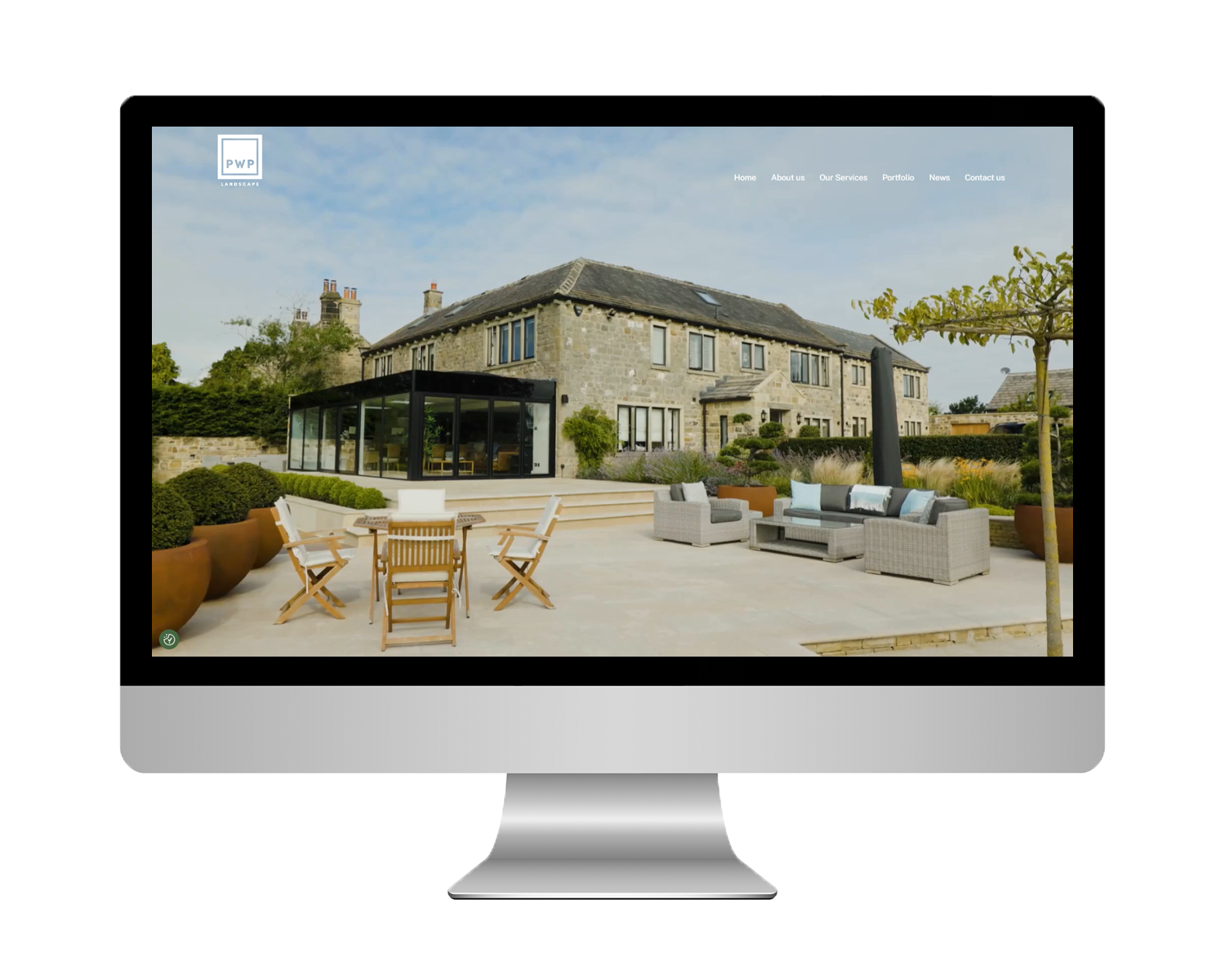Does your website look good to all your visitors?
And we mean all of them, whatever device they’re using. What with all the many devices, operating systems and internet browsers available, it’s imperative that you cater to any and every one that brings in your website traffic. At the very least, try and cater to most of them. That’s just good web design — and good SEO.
By using Google Analytics, it’s fairly simple to find out which devices, operating systems and internet browsers your website visitors use (anonymously, of course). It’s something we do on a regular basis, both for our own websites and for our clients’. For some of the businesses we market, we’ve had an eye on these stats for years.
With the rise of mobile search, we wanted to take a broad look at our selected clients’ website traffic over the past couple of years. We found a few clear differences between 2017 and 2018 and a stark difference between our B2B (business-to-business) clients and B2C (business-to-customer) clients.
Website Traffic: Desktop vs Mobile vs Tablet
Here’s the breakdown of all desktop/mobile/tablet visitors across our selected clients throughout 2017:
Although more than half our B2C clients’ visitors were on desktop, we’re not surprised this is a much smaller proportion than our B2B clients had. For those in business looking for a particular product or service, you would expect them to research it on a computer at their desk. All the better for having a proper look.
We had a similar difference between these types of websites in 2018:
Though oddly enough, the difference actually grew. B2B websites had an even higher proportion of desktop visitors, while B2C websites had a lower proportion. You might also notice a drop in tablet visitors for both types of website. For our B2C clients, this sits beside a rise in mobile visitors. Our B2B websites, on the other hand, also lost some percent in mobile visitors, in favour of desktop.
In both 2017 and 2018, mobile visitors made up over a third of our B2C websites’ audience. We wouldn’t be surprised if that statistic continues to rise in 2019, particularly with the rise of voice search using Siri and Google Assistant (to name a couple). So, if your business is aimed at ordinary consumers, it’s definitely worth making sure your website is mobile-friendly. If it’s a B2B business, you could still be neglecting a fifth of your visitors with a shoddy mobile layout.
Website Traffic: Internet Browsers
Do you prefer Google Chrome, Safari, Microsoft Edge, Internet Explorer, Samsung Internet for Android, Firefox, or something else?
Here’s the breakdown of what our audiences preferred in 2017:
Given the difference in mobile visitors for the same websites, we’re therefore not surprised to find a very similar difference in Safari users. As Safari is the usual port of call for iPhone users but not for Windows desktop users, you could expect more mobile visits to mean more Safari visits. Considering the popularity of Google Chrome as a desktop browser, it also makes sense to take up a larger proportion of our desktop-oriented B2B audiences. The same goes for the difference in Internet Explorer users.
But what really surprised us were the 2018 browser stats:
OK, the B2C stats didn’t change all that much. (Chrome visitors took up a slightly bigger slice, while Safari visitors stayed almost the same. Internet Explorer became a bit less popular, while Microsoft Edge grew. Firefox shrank a little, while Samsung Internet increased.) But let’s look at our B2B audiences…
Between 2017 and 2018, our B2B visitors leaned away from Chrome, from well over half the traffic to just under. Meanwhile, Internet Explorer has also dropped — probably for the best, as Microsoft has stopped developing new features for Internet Explorer. The biggest increase, as you might notice, is the proportion of Firefox users on our B2B websites, closely followed by a rise in Microsoft Edge users.
Although Chrome still takes up a huge slice of our audiences across all our websites, we’ll obviously need to pay even more attention to other browsers, particularly for our B2B clients. The largest changes we have seen in 2018 are the drop in Chrome visits on B2B websites and the accompanying rise in Firefox and Edge visits. The type of browser may not have much effect on how the website looks and performs for its various visitors, but still, it would be wise to test it across your most popular browsers. If you’re aiming at consumers, you may only need to prioritise Chrome and Safari in 2019, as these made up over three-quarters of our B2C visitors. Otherwise, you may have to watch out for Firefox and Edge, as we surely will.
Do you need help keeping an eye on your website traffic? Finding out what devices and browsers your visitors use? Making sure your website works for all of them?
Have a look at our higher-ranking SEO Services and bespoke, mobile-friendly Website Design.


